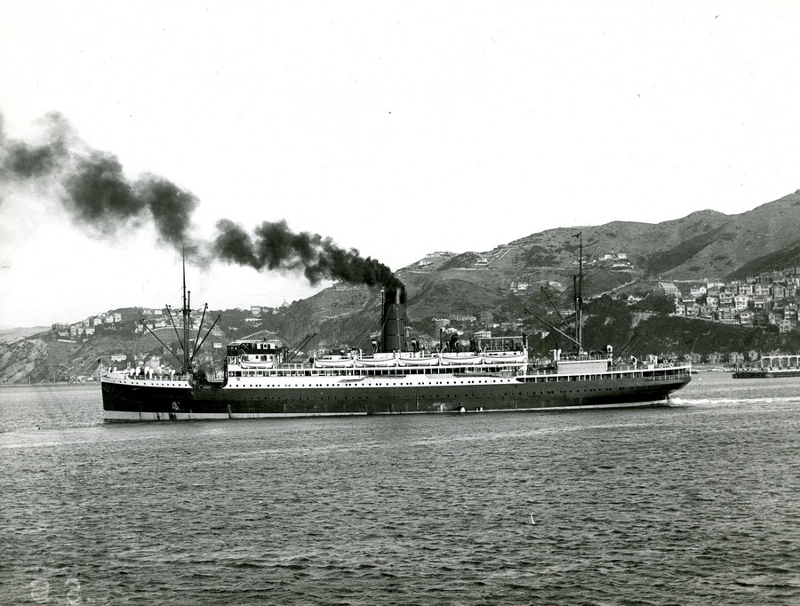 SS Willochra, later the RMS Fort Victoria. Image via Wikipemedia Commons
SS Willochra, later the RMS Fort Victoria. Image via Wikipemedia Commons
On October 26, 1930 this headline burst from the pages of the New York Herald-Tribune: “Sunken Fort Victoria, Menace to Navigation, is Blasted Downward Into Floor of Bay.” In a word: WHAT?!
The “Fort Victoria” in question was a ship (which makes the headline only marginally less amusing), a passenger steamer that began life in 1912 as the SS Willochra owned by the Adelaide Steamship Co., of New Zealand. By 1929, after changing hands, it was known as the SS Fort Victoria and was being used to carry tourists between New York City and Hamilton, Bermuda.
The ship left from Manhattan on Wednesday, December 18 with 255 passengers on board but the going was slow due to one of the worst fogs the New York Bay had ever seen. That afternoon the ship’s captain brought her to a stop about four miles east of Sandy Hook, New Jersey to wait until the visibility improved. It was here that the ship was rammed by the Algonquin, another (less cautious) passenger ship bound for Miami. While the Fort Victoria went down, all 255 passengers, as well as all the crew, were rescued with only one minor injury reported. The Algonquin was able to limp to shore under her own power.
The sinking of the Fort Victoria, while fascinating, is not the end of this ship’s tale. As it was going down the idea was floated (pun only slightly not intended) to tow the ship to port, or at least out of the Ambrose Channel, “the narrow and meandering path to the harbor” where she sank. While arrangements were being made the ship listed severely, making it clear to rescuers she had no future above the water. Once she settled on the bottom she was no longer visible above the waves, but was now extremely hazardous to ships passing through the Channel.
The United States War Department advertised for bids to remove the ship from its dangerous position but with no success, the lowest offering coming in at $300,000. Just when the War Department was about to give up, in came the engineers of Charles W. Johnson, Inc. out of Lewes, Delaware. For less than $150,000 they would dispose of the Fort Victoria in such a way that it would no longer present a hazard to navigation.
Most would assume that removing such a hazard would entail somehow moving the ship, raising it to the surface or dragging it out of the Channel. Not the Johnson boys though. They would stick to their strengths and do what they did best. Charles W. Johnson, Inc. were experts in the use of explosives.
Their plan was as elegant as it was simple. Using carefully placed charges on the sea floor beneath the wreck they would create “an enormous hole in the floor of the bay into which the vessel should slide and eventually be covered over by slit and debris.”
Beginning on October 14, 1930 twenty-five tons of dynamite were sunk in a “carefully calculated area” beneath the hull of the Fort Victoria. At approximately 1:30 in the afternoon on October 16, the Coast Guard sent up a red flag, and a detonator plunger went down. “With a violent wrenching of the earth a mighty sheet of water rose with thunder into the air. It poised a few moments and fell back, tinting itself with prismatic colors from the westerly sun.”
The explosion did its job, lowering the sunken hull to a depth of forty-six feet below the surface (while also punching holes in the ship). A subsequent, more minor explosion (only two-and-a-half tons) was set off a week later to further buckle the hull, essentially destroying the wreck and removing it from its hazardous place in the Channel.
Next, check out 11 Ships That Have Called NYC’s South Street Seaport Home. Get in touch with the author @bookwormhistory.





